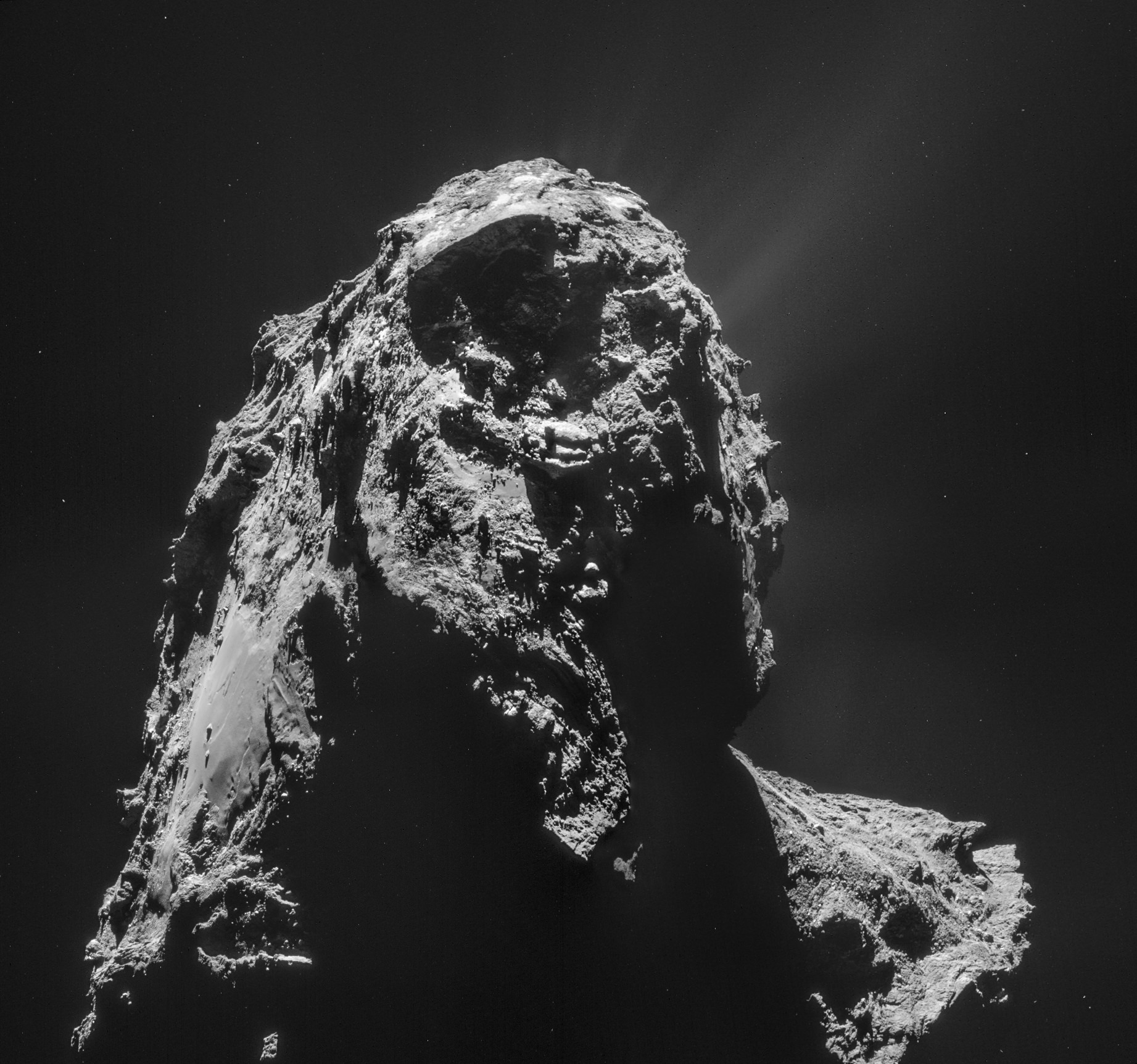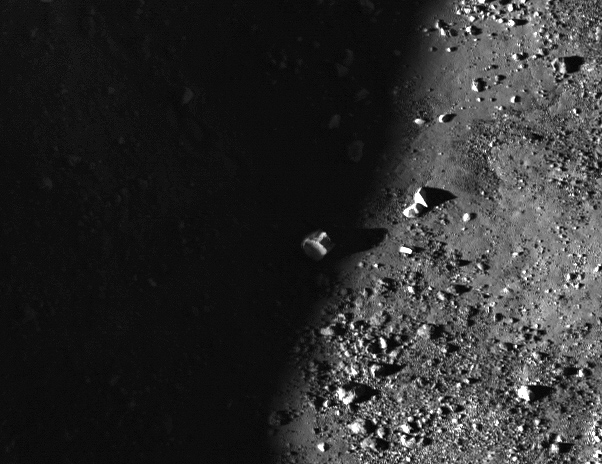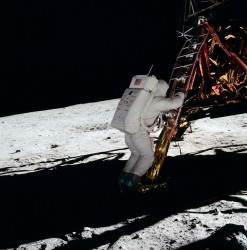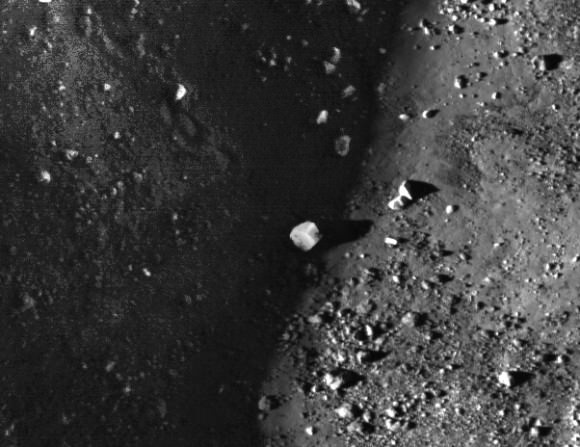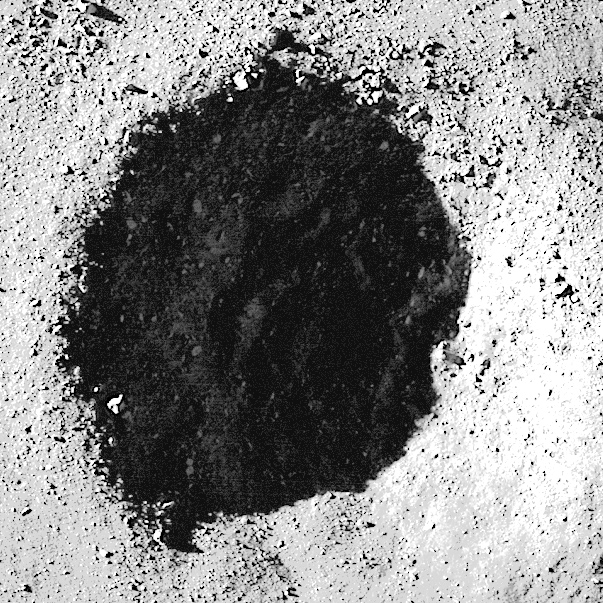A particularly dramatic view of comet 67P/C-G due to the angle of solar illumination, this is a mosaic made from four images acquired by Rosetta’s NavCam on January 16, 2015, from a distance of 28.4 km (17.6 miles). The assembled image shows the larger “bottom” lobe of 67P, with a flat region called Imhotep along the left side and, on the lower right, the transition area stretching up to the comet’s smaller “head” lobe. Outgassing jets can be seen as faint streaks at the upper right, and ejected dust grains show up as bright specks above its surface.
Also in this view is one of 67P’s larger boulders, a somewhat pyramid-shaped rock dubbed “Cheops.” Can you spot it?
There it is!
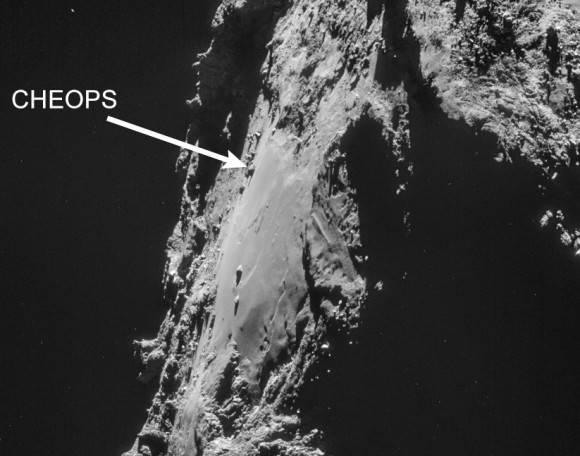
One in a cluster of boulders on 67P’s “underside,” Cheops is about 45 meters wide and 25 meters high (148 x 82 feet).
When it was first observed in Rosetta images Cheops and the nearby cluster reminded scientists of the pyramids at Giza in Egypt, and so it was named for the largest of those pyramids, the Great Pyramid, a tomb for the pharaoh Cheops (the Hellenized name for Khufu) built around 2,550 BCE. (See another view of the Cheops cluster here.)
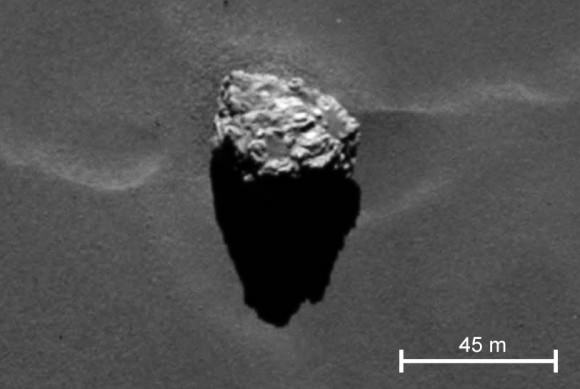
Scientists are still working to determine the nature of 67P’s boulders. It’s not yet known what they are made of or how they came to be where they are observed today. Did they fall into their current positions? Or were they exposed upwards from below as a result of the comet’s activity? And why do they have alternating rough and smooth areas on their surfaces?
“It almost looks as if loose dust covering the surface of the comet has settled in the boulder’s cracks. But, of course, it is much too early to be sure,” said OSIRIS Principal Investigator Holger Sierks from the Max Planck Institute for Solar System Research (MPS) in Germany.
Also see: A Stunning Look at the Cliffs of Comet 67P/Churyumov-Gerasimenko
As comet 67P approaches perihelion over the course of the next six months we will get to see firsthand via Rosetta what sorts of changes occur to its surface features, including office-building-sized boulders like Cheops.
Also, for a quick look at some of 67P’s “vital stats” click here. (Added 1/22)
Source: ESA Rosetta blog

